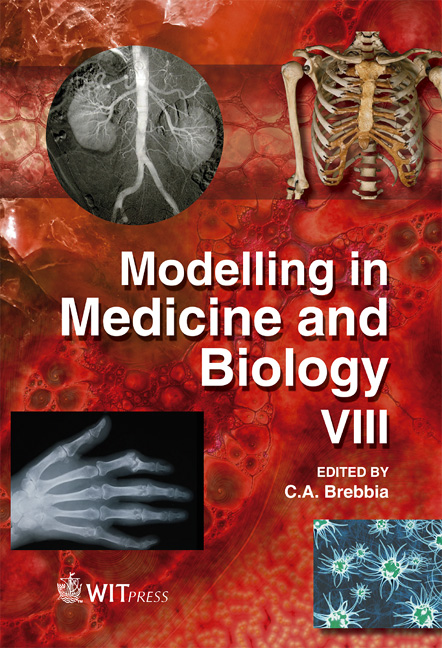Computational Hemodynamics Coupled With Mechanical Behaviour Of The Surrounded Materials, In The Specific Case Of The Brachial Artery
Price
Free (open access)
Transaction
Volume
13
Pages
13
Page Range
133 - 145
Published
2009
Size
846 kb
Paper DOI
10.2495/BIO090131
Copyright
WIT Press
Author(s)
R. Paulus, S. Erpicum, B. J. Dewals, S. Cescotto & M. Pirotton
Abstract
Blood pressure is an essential measure when it comes to peoples’ health. All around the world a high number of people are suffering from hyper- or low tension, and knowing that these diseases can lead to serious complications it is essential to measure blood pressure with high accuracy. The present methods for the measurement of the arterial pressure, by induction of a pressure through an armband (with a control device called sphygmomanometer) are known to introduce some significant errors. Those are caused partly by the inaccuracy and inadequacy of the armband and its dimensions (either the length or the circumference). The objective of the research presented in this paper is to study and simulate the discharge of the blood in the brachial artery. Based on these modelling results, the response of the fluid to the external pressure of the band can be obtained, and finally appropriate corrective factors between the true pressure and the read one could be assessed. From this perspective, research is carried out with the aim of sharing medical and engineering views on this subject. The artery can be modelled as a particular deformable pipe, when the blood is actually a fluid with specific properties. Thus the two complementary and interconnected domains are covered, so be it the solid mechanics (to obtain analytic relations between the strains and the deformations, using either linear or non-linear theories) and the fluid mechanics (to study the discharge of the blood considering a particular deformable pipe, using finite volume methods). Finally, many factors such as BC, for example, or other specific parameters have to be investigated deeply. In this paper, only the hydraulic results will be presented, discussed and analysed. The mechanical developments, being for now essentially analytical, will be mostly left out. Keywords: blood discharge in vessels, vessels’ behaviour, blood pressure, capillaries network.
Keywords
blood discharge in vessels, vessels’ behaviour, blood pressure,capillaries network.





